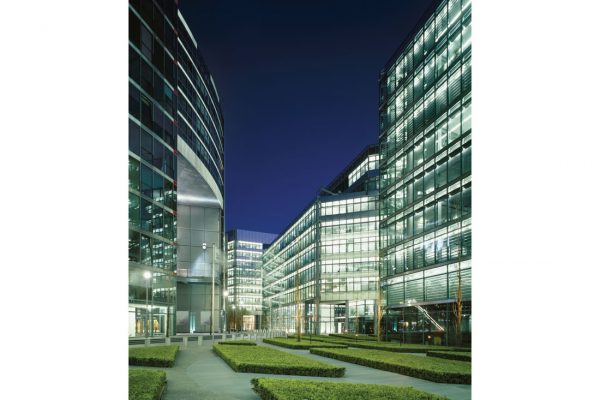The IoT, smart buildings and smart infrastructure are forming the foundational blocks of tomorrow’s greener, cleaner and healthier smart cities. Mary Jane McCraven from Schneider Electric discusses the benefits of smart microgrid systems.

January 30th, 2018
Cities already consume 75 per cent of global energy resources and account for 80 per cent of emissions. And by 2050, 66 per cent of the world’s population will live in cities. Cities are faced with these challenges, as well as high citizen expectations, severe budget constraints, and the need to attract jobs and investment.
American research and advisory firm Gartner defines a smart city as cooperation and information sharing across sectors and systems to achieve sustainable outcomes. The information comes from connected things. Today, 45 per cent of these are in smart homes and smart commercial buildings. Gartner estimates that the total number of connected things will grow from 1.1 billion in 2015 to 9.7 billion in 2020.
Commercial facilities, industrial plants and homes are already beginning to leverage connected devices and the IoT to boost performance and sustainability. Industry analyst Navigant points out that this same level of innovation needs to extend throughout all of the infrastructures a city depends on. This includes government services, transportation, public safety, water, data and communication, and energy.

Government agencies and wider groups of stakeholders are using this ‘digital hub’ to gain new operational insights, enable a more predictive approach and, in turn, improve the efficiency and quality of services.
In regard to the power infrastructure, electric utility companies are starting to digitise their operations to optimise performance and costs while maintaining a safe and reliable grid. However, utilities still face the need to balance energy production against customer demand. Not only is the rapid growth of cities putting a strain on the grid; new intermittent renewable energy sources are a challenge to integrate.
This challenge goes beyond grid-level solar and wind farms. Notes Verdantix, “As building operators invest in new technologies such as energy storage or distributed generation (sometimes within a micro-grid), network operators will need to rethink their strategies for when and how electricity is generated and distributed.”

Image: Getty Images
Utilities are hoping to access the flexibility of these distributed energy assets to help balance the grid and reduce the risk of blackouts. Fortunately, cloud-based solutions such as Distributed Energy Resource Management Systems from Schneider Electric are connecting energy providers and consumers together in a collaborative, win-win partnership. First, at the smart building or home level, an intelligent microgrid management system reliably coordinates onsite energy generation and storage assets. The facility team or homeowner is then given access to a utility-hosted demand management platform.
Such platforms integrate real-time and historical energy and operation data from connected devices throughout the facility or home, as well as weather data inputs. The portal also acts as the communication channel with the energy provider, allowing participation in smart grid programs. The platform takes into account the energy needs of the enterprise or homeowner, then proposes the most advantageous response to different opportunities. This could include reducing load in response to a curtailment request or variable tariffs, performing peak demand management, maximising self-consumption, or selling energy back to the grid.
In this way, the local utility and the energy user are working together to optimise costs, reliability, and sustainability for buildings, homes and the grid.
A searchable and comprehensive guide for specifying leading products and their suppliers
Keep up to date with the latest and greatest from our industry BFF's!

Channelling the enchanting ambience of the Caffè Greco in Rome, Budapest’s historic Gerbeaud, and Grossi Florentino in Melbourne, Ross Didier’s new collection evokes the designer’s affinity for café experience, while delivering refined seating for contemporary hospitality interiors.

Marylou Cafaro’s first trendjournal sparked a powerful, decades-long movement in joinery designs and finishes which eventually saw Australian design develop its independence and characteristic style. Now, polytec offers all-new insights into the future of Australian design.

In the pursuit of an uplifting synergy between the inner world and the surrounding environment, internationally acclaimed Interior Architect and Designer Lorena Gaxiola transform the vibration of the auspicious number ‘8’ into mesmerising artistry alongside the Feltex design team, brought to you by GH Commercial.
The internet never sleeps! Here's the stuff you might have missed

Available now across Australia, Eden TPO is setting new standards in terms of not just sustainability, but also style.

Dallas Rogers, Head of Urban Discipline at the School of Architecture, Design and Planning, University of Sydney, comments on the history of map-making in our cities.

In the pursuit of an uplifting synergy between the inner world and the surrounding environment, internationally acclaimed Interior Architect and Designer Lorena Gaxiola transform the vibration of the auspicious number ‘8’ into mesmerising artistry alongside the Feltex design team, brought to you by GH Commercial.